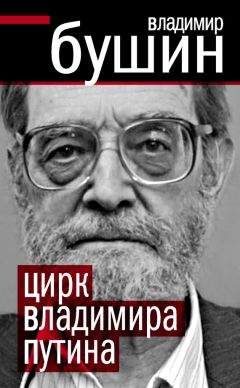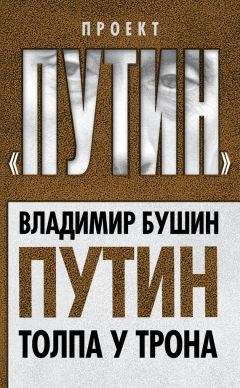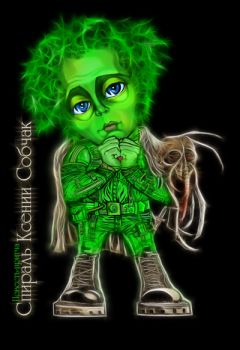Steven Dubner - Freakonomics
“crime.” The same office worker who fails to pay for his bagel might also help himself to a long slurp of soda while filling a glass in a self-serve restaurant, but he is very unlikely to leave the restaurant without paying.
So what do the bagel data have to say? In recent years, there have been two noteworthy trends in the overall payment rate. The first was a long, slow decline that began in 1992. By the summer of 2001, the overall rate had slipped to about 87 percent. But immediately after September 11 of that year, the rate spiked a full 2 percent and hasn’t slipped much since. (If a 2 percent gain in payment doesn’t sound like much, think of it this way: the nonpayment rate fell from 13 to 11
percent, which amounts to a 15 percent decline in theft.) Because many of Feldman’s customers are affiliated with national security, there may have been a patriotic element to this 9/11 Effect. Or it may have represented a more general surge in empathy.
The data also show that smaller offices are more honest than big ones. An office with a few dozen employees generally outpays by 3 to 5 percent an office with a few hundred employees. This may seem counterintuitive. In a bigger office, a bigger crowd is bound to convene around the bagel table, providing more witnesses to make sure you drop your money in the box. But in the big-office/small-office comparison, bagel crime seems to mirror street crime. There is far less street crime per capita in rural areas than in cities, in large part because a rural criminal is more likely to be known (and therefore caught). Also, a smaller community tends to exert greater social incentives against crime, the main one being shame.
The bagel data also reflect how much personal mood seems to affect honesty.
Weather, for instance, is a major factor. Unseasonably pleasant weather inspires people to pay at a higher rate. Unseasonably cold weather, meanwhile, makes people cheat prolifically; so do heavy rain and wind. Worst are the holidays. The week of Christmas produces a 2 percent drop in payment rates—again, a 15
percent increase in theft, an effect on the same magnitude, in reverse, as that of 9/11. Thanksgiving is nearly as bad; the week of Valentine’s Day is also lousy, as is the week straddling April 15. There are, however, a few good holidays: the weeks that include the Fourth of July, Labor Day, and Columbus Day. The difference in the two sets of holidays? The low-cheating holidays represent little more than an extra day off from work. The high-cheating holidays are fraught with miscellaneous anxieties and the high expectations of loved ones.
Feldman has also reached some of his own conclusions about honesty, based more on his experience than the data. He has come to believe that morale is a big factor—that an office is more honest when the employees like their boss and their work. He also believes that employees further up the corporate ladder cheat more than those down below. He got this idea after delivering for years to one company spread out over three floors—an executive floor on top and two lower floors with sales, service, and administrative employees. (Feldman wondered if perhaps the executives cheated out of an overdeveloped sense of entitlement.
What he didn’t consider is that perhaps cheating was how they got to be executives.)
If morality represents the way we would like the world to work and economics represents how it actually does work, then the story of Feldman’s bagel business lies at the very intersection of morality and economics. Yes, a lot of people steal from him, but the vast majority, even though no one is watching over them, do not. This outcome may surprise some people—including Feldman’s economist friends, who counseled him twenty years ago that his honor-system scheme would never work. But it would not have surprised Adam Smith. In fact, the theme of Smith’s first book, The Theory of Moral Sentiments, was the innate honesty of mankind. “How selfish soever man may be supposed,” Smith wrote,
“there are evidently some principles in his nature, which interest him in the fortune of others, and render their happiness necessary to him, though he derives nothing from it, except the pleasure of seeing it.”
There is a tale, “The Ring of Gyges,” that Feldman sometimes tells his economist friends. It comes from Plato’s Republic. A student named Glaucon offered the story in response to a lesson by Socrates—who, like Adam Smith, argued that people are generally good even without enforcement. Glaucon, like Feldman’s economist friends, disagreed. He told of a shepherd named Gyges who stumbled upon a secret cavern with a corpse inside that wore a ring. When Gyges put on the ring, he found that it made him invisible. With no one able to monitor his behavior, Gyges proceeded to do woeful things—seduce the queen, murder the king, and so on. Glaucon’s story posed a moral question: could any man resist the temptation of evil if he knew his acts could not be witnessed? Glaucon seemed to think the answer was no. But Paul Feldman sides with Socrates and Adam Smith—for he knows that the answer, at least 87 percent of the time, is yes.
Levitt is the first to say that some of his topics—a study of discrimination on The Weakest Link?—border on the trivial. But he has shown other economists just how well their tools can make sense of the real world. “Levitt is considered a demigod, one of the most creative people in economics and maybe in all social science,” says Colin F. Camerer, an economist at the California Institute of Technology. “He represents something that everyone thinks they will be when they go to grad school in econ but usually they have the creative spark bored out of them by endless math—namely, a kind of intellectual detective trying to figure stuff out.”
—THE N EW Y ORK T IMES M AGAZINE, AUGUST 3, 2003
2
How Is the Ku Klux Klan Like a Group of Real-
Estate Agents?
As institutions go, the Ku Klux Klan has had a markedly up-and-down history. It was founded in the immediate aftermath of the Civil War by six former Confederate soldiers in Pulaski, Tennessee. The six young men, four of whom were budding lawyers, saw themselves as merely a circle of like-minded friends—thus the name they chose, “kuklux,” a slight mangling of kuklos, the Greek word for “circle.” They added “klan” because they were all of Scotch-Irish descent. In the beginning, their activities were said to be harmless midnight pranks—riding horses through the countryside while draped in white sheets and pillowcase hoods. But soon the Klan evolved into a multi-state terrorist organization designed to frighten and kill emancipated slaves. Among its regional leaders were five former Confederate generals; its staunchest supporters were the plantation owners for whom Reconstruction posed an economic and political nightmare. In 1872, President Ulysses S. Grant spelled out for the House of Representatives the true aims of the Ku Klux Klan: “By force and terror, to prevent all political action not in accord with the views of the members, to deprive colored citizens of the right to bear arms and of the right of a free ballot, to suppress the schools in which colored children were taught, and to reduce the colored people to a condition closely allied to that of slavery.”
The early Klan did its work through pamphleteering, lynching, shooting, burning, castrating, pistol-whipping, and a thousand forms of intimidation. They targeted former slaves and any whites who supported the blacks’ rights to vote, acquire land, or gain an education. Within barely a decade, however, the Klan had been extinguished, largely by legal and military interventions out of Washington, D.C.
But if the Klan itself was defeated, its aims had largely been achieved through the establishment of Jim Crow laws. Congress, which during Reconstruction had been quick to enact measures of legal, social, and economic freedom for blacks, just as quickly began to roll them back. The federal government agreed to withdraw its occupation troops from the South, allowing the restoration of white rule. In Plessy v. Ferguson, the U.S. Supreme Court gave the go-ahead to full-scale racial segregation.
The Ku Klux Klan lay largely dormant until 1915, when D. W. Griffith’s film The Birth of a Nation—originally titled The Clansman—helped spark its rebirth.
Griffith presented the Klan as crusaders for white civilization itself, and as one of the noblest forces in American history. The film quoted a line from A History of the American People, written by a renowned historian: “At last there had sprung into existence a great Ku Klux Klan, a veritable empire of the South, to protect the Southern country.” The book’s author was U.S. president Woodrow Wilson, onetime scholar and president of Princeton University.
By the 1920s, a revived Klan claimed eight million members, including President Warren G. Harding, who reportedly took his Klan oath in the Green Room of the White House. This time around, the Klan was not confined to the South but ranged throughout the country; this time, it concerned itself not only with blacks but also with Catholics, Jews, communists, unionists, immigrants, agitators, and other disrupters of the status quo. In 1933, with Hitler ascendant in Germany, Will Rogers was the first to draw a line between the new Klan and the new threat in Europe: “Papers all state Hitler is trying to copy Mussolini,” he wrote. “Looks to me like it’s the Ku Klux that he is copying.”
The onset of World War II and a number of internal scandals once again laid the Klan low. Public sentiment turned against the Klan as the unity of a country at war trumped its message of separatism.
But within a few years, there were already signs of a massive revival. As wartime anxiety gave way to postwar uncertainty, Klan membership flourished. Barely two months after V-J Day, the Klan in Atlanta burned a 300-foot cross on the face of Stone Mountain, site of a storied rock carving of Robert E. Lee. The extravagant cross burning, one Klansman later said, was intended “just to let the niggers know the war is over and that the Klan is back on the market.”
Atlanta had by now become Klan headquarters. The Klan held great sway with key Georgia politicians, and its Georgia chapters included many policemen and sheriff’s deputies. Yes, the Klan was a secret society, reveling in passwords and cloak-and-dagger ploys, but its real power lay in the very public fear that it fostered—exemplified by the open secret that the Ku Klux Klan and the law-enforcement establishment were brothers in arms.
Atlanta—the Imperial City of the KKK’s Invisible Empire, in Klan jargon—was also home to Stetson Kennedy, a thirty-year-old man with the bloodlines of a Klansman but a temperament that ran opposite. He came from a prominent southern family whose ancestors included two signers of the Declaration of Independence, an officer in the Confederate Army, and John B. Stetson, founder of the famed hat company and the man for whom Stetson University was named.
Stetson Kennedy grew up in a fourteen-room house in Jacksonville, Florida, the youngest of five children. His uncle Brady was a Klansman. But he got his first real exposure to the Klan when the family’s maid, Flo, who had pretty much raised Stetson, was tied to a tree, beaten, and raped by a gang of Klansmen. Her offense: talking back to a white trolley driver who had shortchanged her.
Because Kennedy couldn’t fight in World War II—he had had a bad back since childhood—he felt compelled to defend his country at home. Its worst enemy, he believed, was bigotry. Kennedy became a self-described “dissident at large,”
writing anti-bigotry articles and books. He became close friends with Woody Guthrie, Richard Wright, and a host of other progressives; Jean-Paul Sartre published his work in France.
Writing did not come easily to Kennedy, or happily. He was at root a country boy who would rather have been off fishing the swamps. But he was afflicted by a foolhardy devotion to his cause. Kennedy would go on to become the only gentile member of the Anti-Defamation League’s postwar effort to smite bigotry.
(He coined the phrase “Frown Power,” a centerpiece of the ADL’s peer-pressure campaign, which encouraged people to pointedly frown when they heard bigoted speech.) He became the only white correspondent for the Pittsburgh Courier, the country’s largest black newspaper. (He wrote a column about the race struggle in the South under the pseudonym Daddy Mention—a black folk hero who, as myth told it, could outrun the blast of a sheriff’s shotgun.) What drove Kennedy was a hatred of small-mindedness, ignorance, obstructionism, and intimidation—which, in his view, were displayed by no organization more proudly than by the Ku Klux Klan. Kennedy saw the Klan as the terrorist arm of the white establishment itself. This struck him as an intractable problem, for a variety of reasons. The Klan was in cahoots with political, business, and law-enforcement leaders. The public was frightened and felt power-less to act against the Klan. And the few anti-hate groups that existed at the time had little leverage or even information about the Klan. As Kennedy later wrote, he was particularly chagrined by one key fact about the Klan:
“Almost all of the things written on the subject were editorials, not exposés. The writers were against the Klan, all right, but they had precious few inside facts about it.”
So Kennedy decided—as any foolhardy, fearless, slightly daft anti-bigot would—
to go undercover and join the Ku Klux Klan.
In Atlanta, he started hanging around a pool hall “whose habitués,” as he later wrote, “had the frustrated, cruel look of the Klan about them.” A man named Slim, a taxi driver, sat beside him at the bar one afternoon. “What this country needs is a good Kluxing,” Slim said. “That’s the only way to keep the niggers, kikes, Catholic dagos, and Reds in their place!”
Kennedy introduced himself as John S. Perkins, the alias he had adopted for his mission. He told Slim, truthfully, that his uncle Brady Perkins back in Florida had once been a Great Titan with the Klan. “But they’re dead now, aren’t they?”
he asked Slim.
That prompted Slim to whip out a Klan calling card: “Here Yesterday, Today, Forever! The Ku Klux Klan Is Riding! God Give Us Men!” Slim told “Perkins”
that he was in luck, for there was a membership drive under way. The $10
initiation fee—the Klan’s sales pitch was “Do You Hate Niggers? Do You Hate Jews? Do You Have Ten Dollars?”—had been reduced to $8. Then there was another $10 in annual dues, and $15 for a hooded robe.
Kennedy balked at the various fees, pretending to play hard to get, but agreed to join. Not long after, he took the Klan oath in a nighttime mass initiation atop Stone Mountain. Kennedy began attending weekly Klan meetings, hurrying home afterward to write notes in a cryptic shorthand he invented. He learned the identities of the Klan’s local and regional leaders and deciphered the Klan’s hierarchy, rituals, and language. It was Klan custom to affix a Kl to many words; thus would two Klansmen hold a Klonversation in the local Klavern. Many of the customs struck Kennedy as almost laughably childish. The secret Klan handshake, for instance, was a left-handed, limp-wristed fish wiggle. When a traveling Klansman wanted to locate brethren in a strange town, he would ask for a “Mr. Ayak”—“Ayak” being code for “Are You a Klansman?” He would hope to hear, “Yes, and I also know a Mr. Akai”—code for “A Klansman Am I.”



